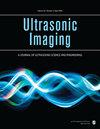用Resnets自动测量超声图像笔触角。
IF 2.5
4区 医学
Q1 ACOUSTICS
引用次数: 6
摘要
本文提出了一种基于深度学习的笔角自动测量方法。首先,利用局部Radon变换(LRT)检测超声图像上的浅、深腱膜;其次,在深筋膜和浅筋膜之间引入一条参考线,以帮助检测肌纤维的方向。使用深度残差网络(Resnets)来判断参考线和肌纤维的相对方向。然后,修改参考线,直到参考线平行于肌纤维的方向。最后,根据检测到的腱膜和肌纤维的方向,得到笔划角。我们提出的方法检测到的角度与人工标记的角度相差约1°。在CPU条件下,该方法对单个肌纤维图像的平均推理时间约为1.6 s,而序列图像序列的平均推理时间为0.47 s。实验结果表明,该方法可以实现对角的精确、鲁棒性测量。本文章由计算机程序翻译,如有差异,请以英文原文为准。
Automatic Measurement of Pennation Angle from Ultrasound Images using Resnets.
In this study, an automatic pennation angle measuring approach based on deep learning is proposed. Firstly, the Local Radon Transform (LRT) is used to detect the superficial and deep aponeuroses on the ultrasound image. Secondly, a reference line are introduced between the deep and superficial aponeuroses to assist the detection of the orientation of muscle fibers. The Deep Residual Networks (Resnets) are used to judge the relative orientation of the reference line and muscle fibers. Then, reference line is revised until the line is parallel to the orientation of the muscle fibers. Finally, the pennation angle is obtained according to the direction of the detected aponeuroses and the muscle fibers. The angle detected by our proposed method differs by about 1° from the angle manually labeled. With a CPU, the average inference time for a single image of the muscle fibers with the proposed method is around 1.6 s, compared to 0.47 s for one of the image of a sequential image sequence. Experimental results show that the proposed method can achieve accurate and robust measurements of pennation angle.
求助全文
通过发布文献求助,成功后即可免费获取论文全文。
去求助
来源期刊

Ultrasonic Imaging
医学-工程:生物医学
CiteScore
5.10
自引率
8.70%
发文量
15
审稿时长
>12 weeks
期刊介绍:
Ultrasonic Imaging provides rapid publication for original and exceptional papers concerned with the development and application of ultrasonic-imaging technology. Ultrasonic Imaging publishes articles in the following areas: theoretical and experimental aspects of advanced methods and instrumentation for imaging
 求助内容:
求助内容: 应助结果提醒方式:
应助结果提醒方式:


